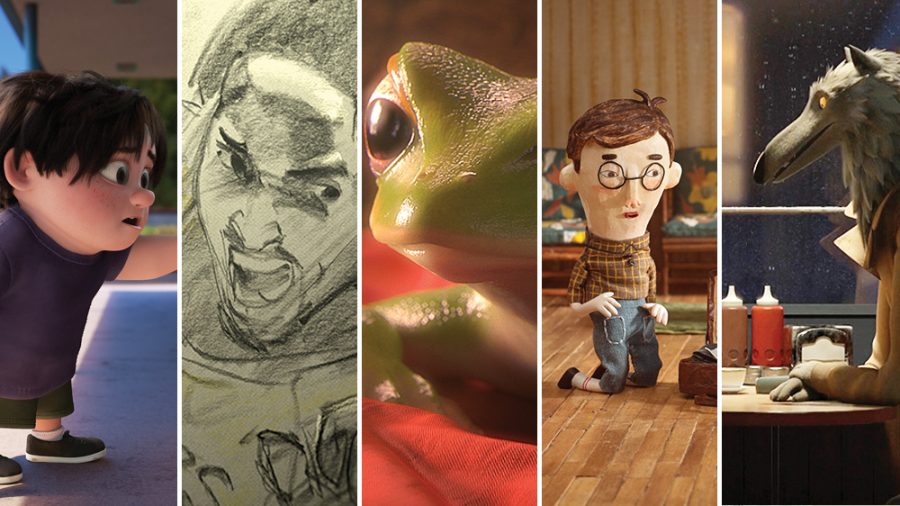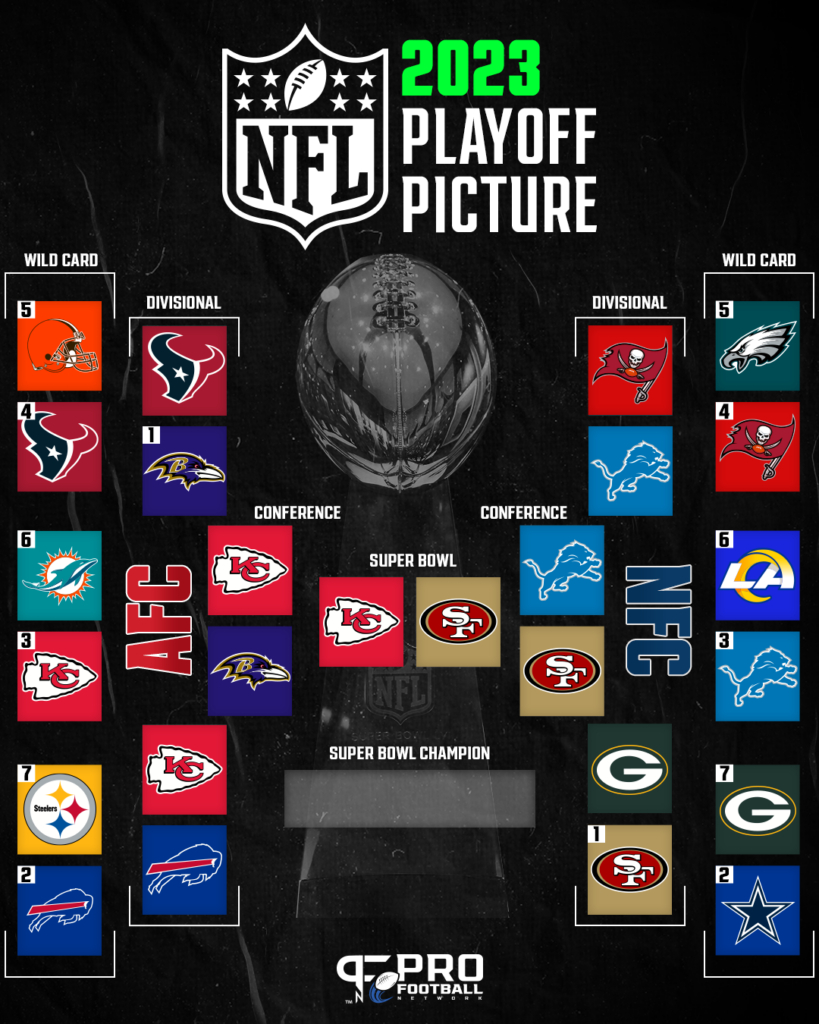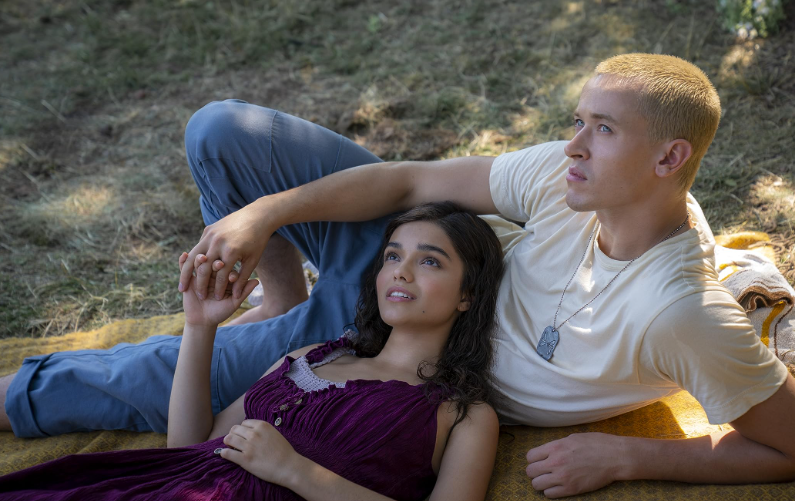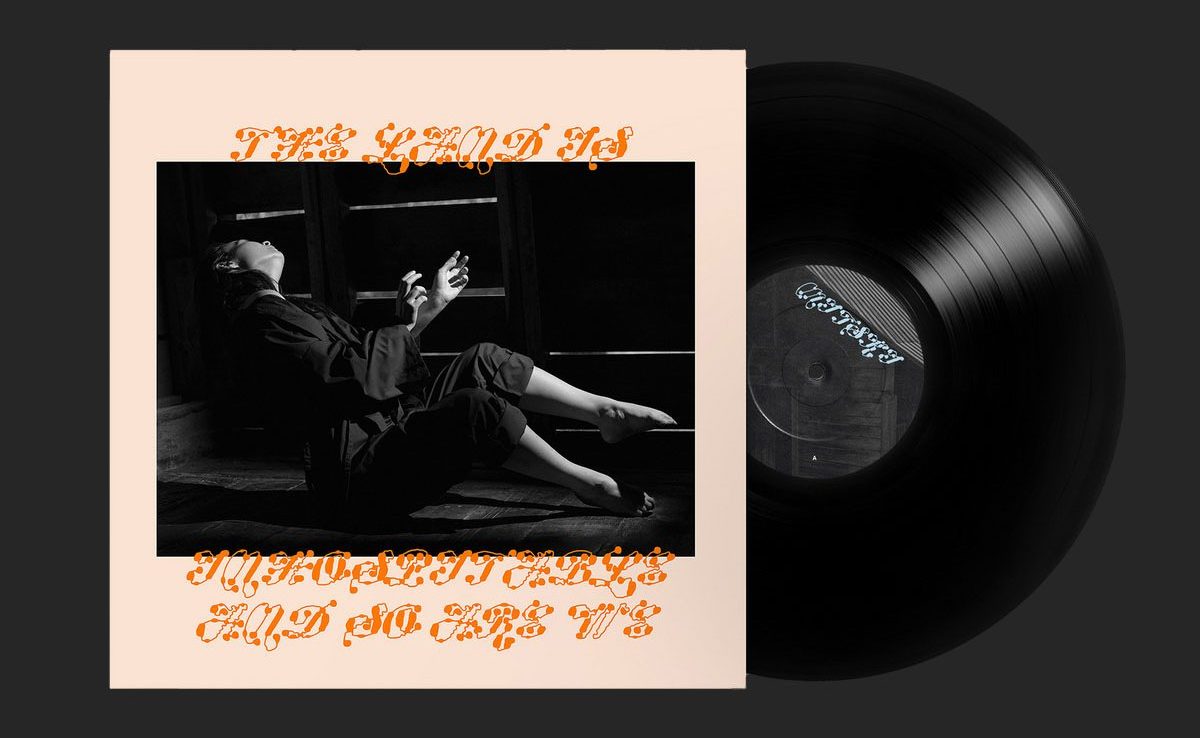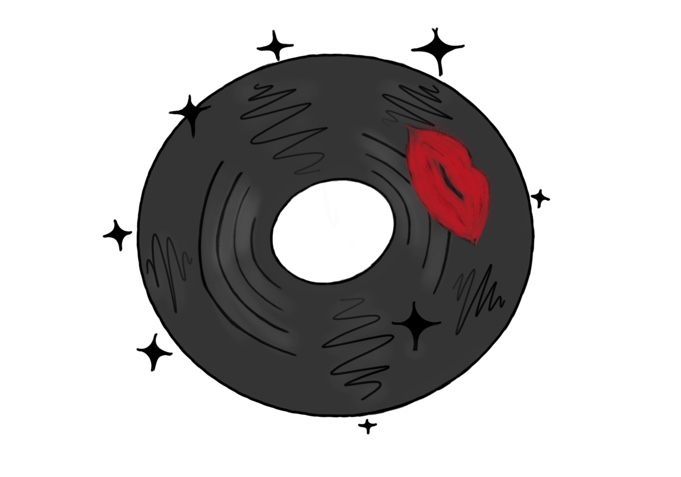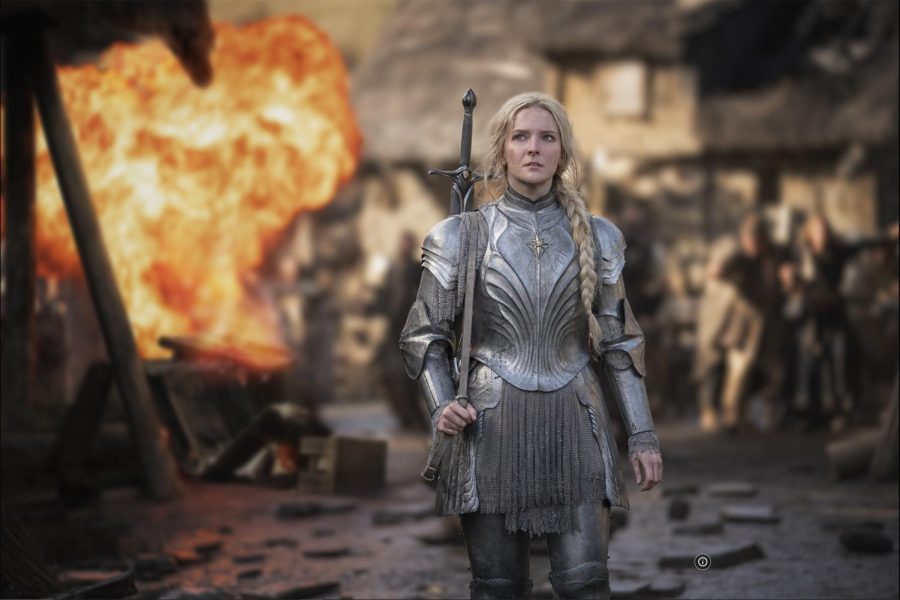With the Oscars a short few days away it’s time to place your bets on who’s bound to win an Academy Award. While many of the film nominees are politically-charged commentaries, this year’s batch of acclaimed animated short-films includes a surprising amount of intimate stories that focus on the whimsy and magic of childhood wonder (with the exception of one that centers around a particular group of adventurous amphibians–but we’ll get to that later). Each short is served on its own platter, featuring distinct animation from stop-motion to photorealistic each short is full of animated eye candy that’s paired with a unique auditory experience varying from narration to silent film. Putting the contenders head-to-head, let’s see who actually has a shot at bringing home the gold.[vc_text_separator title=”The Reviews”][vc_video link=”https://www.youtube.com/watch?v=vA3Pqne28PE”]
“Dear Basketball”–by Kobe Brant and Glen Keane
Professional basketball player Kobe Bryant announced his retirement from his 20-year career through a poem he titled “Dear Basketball,” which subsequently became the inspiration for his animated short of the same name. “Dear Basketball” is both Bryant’s love letter and farewell note to basketball as he retells his history with the sport. Partnering his newly founded Kobe Studios with famed animator Glen Keane–best known for his character animation featured in Walt Disney Animation films including “The Little Mermaid”, “Beauty and the Beast”, “Aladdin” and “Pocahontas“–Bryant devises a short film that illustrates the childlike whimsy of traditional animation while connecting to more adult themes of loss and retirement; however, “Dear Basketball” is the weakest of all the Oscar animated entries with the blandest art direction and storytelling.
Compared to the rest of the competition, stylistically, “Dear Basketball” features sepia-filtered and Disney-esque scenes that seem recycled and lacked fluidity between frames that made it hard to watch. The saving grace would have been acclaimed composer John Williams’ music score, except for the fact that his bold and bright orchestral tones only masked Bryant’s monotone narration. Furthermore, Bryant’s short is steeped in controversy due to the recent sexual assault allegations against the former NBA star himself and in light of the #MeToo movement, many have signed petitions to revoke the short’s nomination. Although Bryant attempted to create an emotional piece that tugged at the heartstrings, he ultimately failed through his usage of cheesy lines, cliches and shotty animation.
Watch the short on go90.[vc_separator][vc_video link=”https://vimeo.com/252818510″]
“Negative Space”–by Max Porter and Ru Kuwahata
From French animation studio Studio Ikki, “Negative Space,” like its fellow short film “Dear Basketball,” is another visual adaptation of a poem. The poem of the same name was written by Ron Koertge and explores a bittersweet father-son relationship through the art of packing. Sam, the speaker, reflects upon the strange bond he developed with his father–who was often absent from home for work–through stuffing his father’s suitcases for him.
Stylistically, “Negative Space” is the quirkiest of all the films, opting for stop-motion animation rather than anything computer generated. The art direction is very reminiscent of “My Life as a Zucchini”, another French animation that was nominated for an Oscar award in 2017, especially through the usage of textures and distinct character modeling. “Negative Space” also shines with its minimal amount of background music and sound to highlight Sam’s narration. The absence of auditory obstacles forces the audience to cue into Sam reciting, providing much better storytelling than Kobe Bryant’s melodramatic and overzealous short.
Compared to all the other nominees, “Negative Space” stands out for being the most aloof and mature, focusing on abandonment and coping with it. Sam is in a state of discontent, and recognizes that him and his father’s connection was strictly business and nontraditional that hinted at by the cold, monotonous voice-over; however, when juxtaposed by the film’s bright, visual interpretation of the story, viewers can still see the love he cherishes for distant father as a younger Sam is seen taking delight in what little moments he has with his father through organizing luggage. Although “Negative Space” may alienate some with its standoffish demeanor, the film excels in being an alternative to the bright and brash 3D animation seen today through its mature themes and cinematography.[vc_separator][vc_video link=”https://www.youtube.com/watch?v=0iYsBnj2BUk”]
“Lou”–by Dave Mullins and Dana Murray
Animation juggernauts Disney and Pixar’s “Lou” is about a hero-and-villain conflict between a creature named Lou and J.J., the new bully on the block. Taking place on the blacktop of an elementary school, the film features Lou, a spirit that takes the form of an assortment of children’s toys from the school’s lost-and-found box. Unbeknownst to the students, Lou acts as the guardian of the playground, spending its time retrieving items left by the students after recess each day and returning them the next. This habit continues until J.J. begins to torment his fellow classmates, taking their toys and running amok. Angered at the sight, Lou sets out on a mission to take all the toys back from J.J., initiating the conflict between the two that becomes the main focus of the short.
Although the film retains the high-quality animation you would expect from the well-known studios, compared to Disney-Pixar’s past Oscar-nominated shorts “Lou”–artistically–was underwhelming. Aside from Lou’s own character design, past entries such as “Piper” and “Feast” were far more visually pleasing thanks to their customized art direction and styles, while much of the character models within “Lou” seemed recycled from previous collaborations such as “Toy Story” and “Coco”. Luckily, a strong feature “Lou” manages to bring in from previous shorts is storytelling with minimal dialogue, allowing the music and visuals of the film to truly drive the storytelling. Overall, “Lou” is strong stand-alone short but falls flat compared to its other Disney-Pixar predecessors.
The full-length film is currently available on YouTube for $1.99.[vc_separator][vc_video link=”https://www.youtube.com/watch?v=J2n4OTAqqqQ”]
“Revolting Rhymes Part One”–by Jakob Schuh and Jan Lachauer
Despite being the longest of all the Oscar-nominated shorts, with a running time of 30 minutes, “Revolting Rhymes Part One” is a charming take on the “twisted fairy tale” trope that keeps viewers engaged through cheeky humor and delicate animation. The two-part series, broadcasted by BBC One in late 2017, is based on a collection of Roald Dahl poems of the same name that parody six well-known fairy tales including “Snow White and the Seven Dwarfs,” “Jack and the Beanstalk” and “Cinderella”. Standing out as the only short adapted for television, that doesn’t make it any less compelling. If anything, the episodic nature only makes the plot more enticing as viewers can truly invest themselves in the characters presented knowing that there’s more to the story in its follow-up “Revolting Rhymes Part Two” (which is just as good as its predecessor).
The nominated short itself takes three of these stories–”Snow White and the Seven Dwarfs,” “Little Red Riding Hood and the Wolf” and “The Three Little Pigs”–and combines them into a single, cohesive plot that branches off into storylines that mimic Dahl’s source material. Typically, deviations from a film’s original inspiration are seen as distracting and are detrimental to the overall storytelling–but this isn’t the case with “Revolting Rhymes Part One”. From Dahl’s poetry, only “Little Red Riding Hood and the Wolf” and “The Three Little Pigs” stories were intertwined by their connection to wolves being the antagonists in both stories; however, in BBC One’s adaptation “Snow White and the Seven Dwarfs” as the short establishes a strong relationship between main characters Red and Snow White. The short switches between focusing on Red and Snow White both separately and together, showing how the two mature and learn from bonding with each other over time.
Like the story, “Revolting Rhymes Part One’ deviation in art direction also enhances the film’s charm and demeanor. For Dahl’s series artist Quentin Blake–who also illustrated for nearly all of Dahl’s books–created the cover and character design for each separate story. Blake’s style is known for being sketchy, off-putting and characterized, utilizing thick, black lines to underscore all the details within his pieces. BBC One’s interpretation, on the other hand, retains all the shapes and dramatizations of the characters Blake designed while instead opting out his sketched, flattening lines for soft colors and 3D character modeling. Together, the combination of charming source material and alterations in storytelling, art and composition pieces together an eclectic tale full of nostalgia and humor, and anyone willing to try the film is in for one clever movie.
The full Revolting Rhymes series is currently streaming for users on Netflix. [vc_separator][vc_video link=”https://www.youtube.com/watch?v=-ZSRY9TCTAA”]
“Garden Party”–by Victor Caire and Gabriel Grapperon
“Garden Party” is perhaps the darkest and strangest short nominated for an Academy Award so far. The film centers around a herd of frogs and toads as they slowly invade an abandoned villa fill with sweet treats and caviar. Over time, it becomes glaringly obvious that there’s a darker underbelly to the amphibians’ new found oasis as the film switches between shots of the explorers and the estate, which riddled with bullet holes, abandoned guns and tossed-over furniture. Luckily for the frogs and toads, they are unbothered by the crime scene and remain carefree as they simply wander about the rich house, following their primal instincts for adventure. Through the director’s brilliant use of dramatic irony, the audience is put in an instant unease through the juxtaposition of the ignorant amphibians and their gruesome new home.
Where “Garden Party” really begins to distance itself from the competition is its demeanor as an unapologetic piece willing to push itself artistically. Owning up to its gory premise, “Garden Party” renders its scenes to be unsettlingly hyper-realistic rather than opting for a softer, kid-friendly design. Paired with a dramatic musical score worthy of a Hitchcock horror-flick the film establishes itself as unwelcoming and better suited for mature audiences, preparing viewers for the shocking climax later on. To top it off, the short still is able to startle audience without a single word, since the subject matter can’t speak. Few studios since the age of silent films have been capable of such dynamic and sensory-driven storytelling, making “Garden Party” a true standout from its fellow nominees.[vc_separator]With that, who do you think deserves the Acadamy Award for Best Short Film (Animated)? Share your thoughts in the comments below!












































































